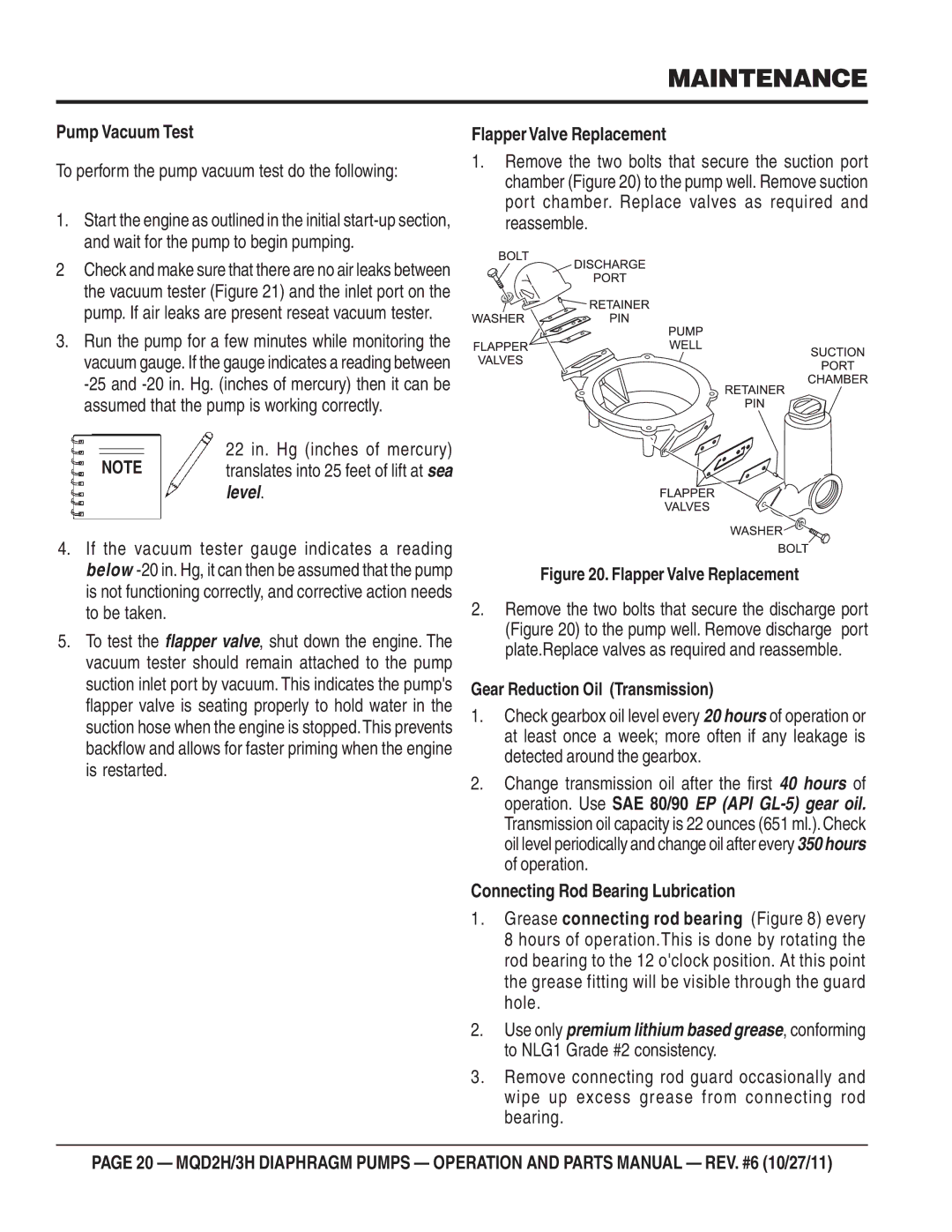MQD2H specifications
The Multiquip MQD2H is a versatile and robust diesel-powered generator designed to cater to a wide range of applications, making it a staple for construction sites, emergency backup, and outdoor events. Engineered with advanced technologies, this generator is built to deliver reliable power and withstand challenging environments.At the heart of the MQD2H is a powerful, fuel-efficient diesel engine that ensures long operational hours with minimal downtime. This efficiency is crucial for projects requiring continuous power supply. Equipped with a large fuel tank, the MQD2H can operate for extended periods without the need for frequent refueling, enhancing productivity on the job site.
One of the standout features of the MQD2H is its robust construction. The generator is housed in a durable frame that protects it from physical damage and harsh weather conditions. Its compact design allows for easy transportation and maneuverability, making it ideal for various locations. Additionally, the generator is equipped with advanced soundproofing technology, reducing operational noise levels and making it suitable for use in noise-sensitive environments.
The MQD2H is designed with user convenience in mind. It features an intuitive control panel that provides easy access to vital operational information, allowing users to monitor the generator's performance at a glance. The control panel includes circuit breakers, start/stop switches, and hour meters, ensuring that operators have full control over the generator’s functionality.
Safety is also a priority with the Multiquip MQD2H. The generator incorporates automatic shutdown features for low oil pressure and high engine temperature, protecting the unit from potential damage. This built-in safety mechanism provides peace of mind for operators, knowing that the generator is safeguarded against operational hazards.
Furthermore, the MQD2H complies with emission regulations, making it an environmentally friendly choice among generators. The design includes technologies that minimize harmful emissions without compromising power output, adhering to industry standards and promoting cleaner operation.
In conclusion, the Multiquip MQD2H is a reliable, durable, and efficient generator ideal for a multitude of applications. With its powerful diesel engine, user-friendly controls, enhanced safety features, and commitment to environmental sustainability, it stands out as a top choice for professionals seeking dependable power solutions in demanding conditions.

